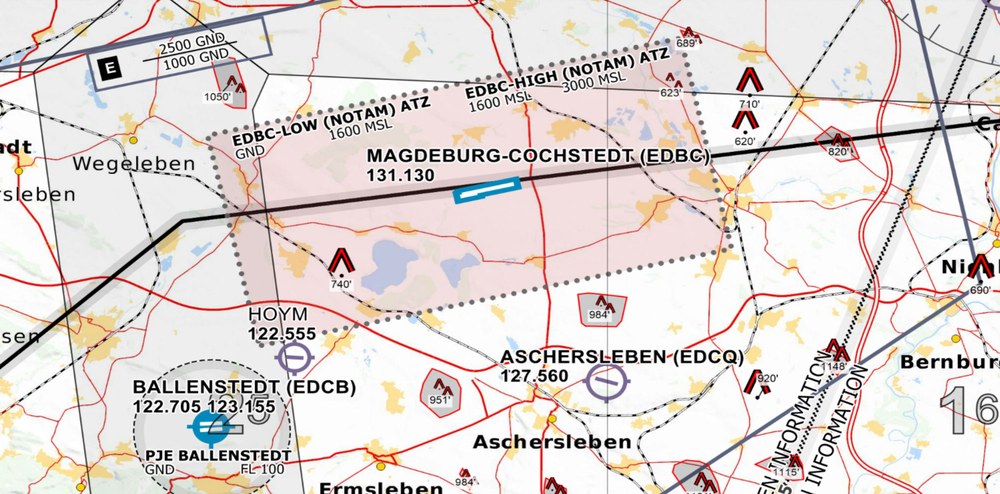Campaign management
The Test Center provides scientific institutions and companies with realistic opportunities for testing unmanned aircraft systems (UAS for short).

Testing options
The Test Center offers a diverse structural and technical infrastructure for carrying out extensive test scenarios. The runway (length: 2.5 kilometers) and a grass runway (length: 800 meters) are available for various tests. Take-offs and landings can be tested on a round and a square vertipad (take-off and landing areas for vertical take-off UAS).
Sufficient hangar space and storage facilities are available for the preparation and follow-up of the tests. The scientific infrastructure of the test center can also be used. A detailed list of the technology can be found under: Research infrastructure.
In addition, office space and meeting rooms can be rented in the tower to support the project during test operation with data evaluations or meetings.
Test area
Due to the location of the airport in a sparsely populated region, it is possible to use an extensive flight area for the test scenarios.

Open Flight Map
Magdeburg-Cochstedt Airport has an Aerodrome Traffic Zone (ATZ for short), which can be activated if necessary (ATZ HX). Air traffic participants must then avoid Magdeburg-Cochstedt airspace (EDBC) for pure transit flights. Intended approaches and departures must be coordinated with the tower. The ATZ can be activated for two levels: The ATZ low extends from the ground up to an altitude of 1600 ft (feet), the ATZ high from 1600 to 3000 ft (feet).
This enables effective separation of UAS operations from the rest of air traffic.
Registration process
As the test scenarios are very individual, the National Experimental Test Center relies on close, personal contact. Once contact has been made regarding the timing and content of the test project, the registration process is usually as follows:
1. Establishing contact
The requirements of the test scenario and the necessary infrastructure are coordinated in close cooperation with the Test Center.
2. Cost calculation
A cost calculation can be prepared on the basis of the agreed test scenario.
3. Authorization
The UAS operator is responsible for obtaining the necessary operating licenses. The test center is happy to assist with this. Depending on the aircraft and test scenario, UAS testing takes place in the Open or Specific Category.
4. Conclusion of contract
The Test Center prepares an offer tailored to the test scenario. As the test flights can vary greatly in type and scope, differentiated, individually tailored price models apply.
Contact us
Please use the Contact Form in order to get in touch with us.
